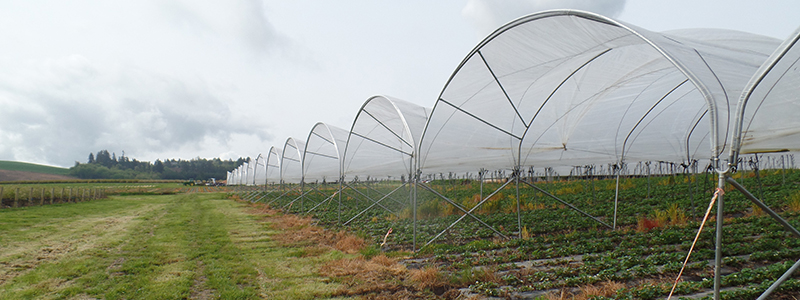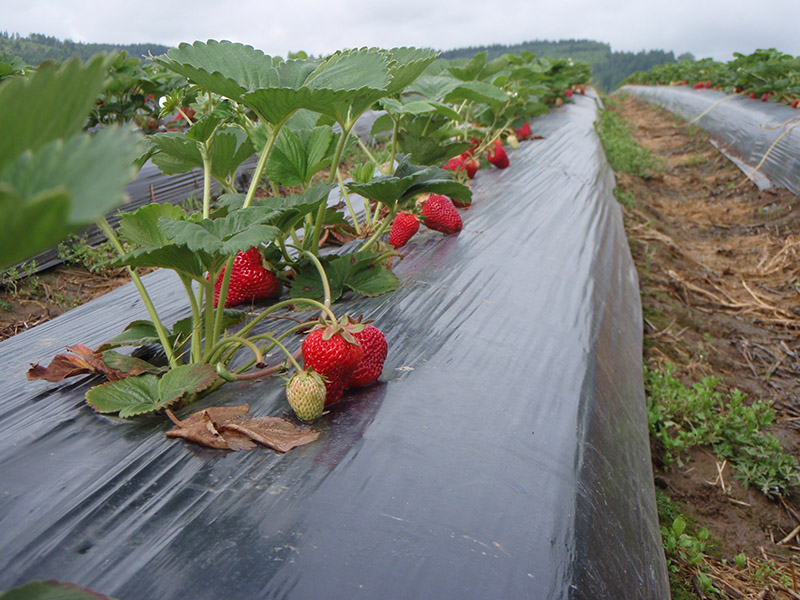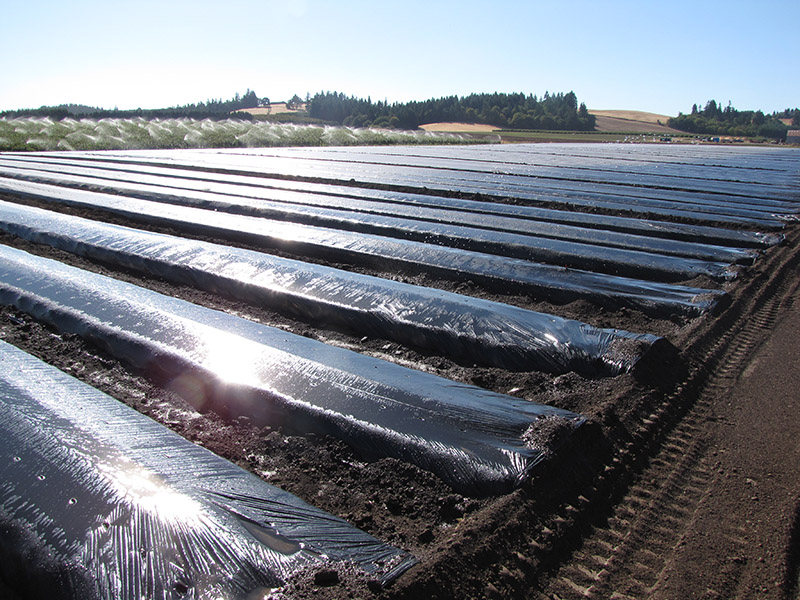
Learn more about land and soil preparation for Oregon Fresh Market Strawberries. Includes tips for tunnel production & bed shaping for fresh strawberries.
Tunnel Production and Bed Shaping for Fresh Strawberries
Day Neutrals Land and Soil Preparation
- Take soil samples. Take soil samples and have them analyzed by a laboratory. It’s important to know what your basic nutrient levels are so that you can amend for deficiencies in macro- or micronutrients. Do this before you plant.
- Amend. Based on your soil sample test results, correct any deficiencies with a pre-plant fertilizer. Washington State University recommends a pre-plant application of 60-80 lb of nitrogen per acre, along with a similar amount of potassium. Recommendations indicate that a soil pH should be 5.4 – 6.5.
- Work the ground. It’s necessary to work the soil enough so it becomes a fine texture, much the same as if you were direct seeding.
- Form the beds. Specialized equipment will be needed to shape the beds and lay the plastic. Growers in the Willamette Valley area have found it helpful to modify pre-made equipment or fabricate their own. You need at least 10-12 inch high beds. A typical bed top is about 24-36 inches wide. Make sure that the plastic mulch rolls you use, work with the bed shaper width. A typical width of plastic is about 56 inches. The ‘extra’ plastic lays against the sides of the beds and is pulled taut by heaped soil.
- Lay the drip tape and plastic mulch. The plastic mulch and drip tape should be applied immediately after bed-shaping so that beds do not erode, which occurs rapidly when left exposed to rainfall. Some equipment that exists does the drip tape and plastic mulch laying together. Others do them separately. Make sure to lay the drip tape under the plastic.
June-Bearers Land and Soil Preparation
- Take soil samples. Take soil samples and have them analyzed by a laboratory. It’s important to know what your basic nutrient levels are so that you can amend for deficiencies in macro- or micronutrients. Do this before you plant. Recommendations indicate that a soil pH should be somewhere between 5.4 and 6.5.
- Work the ground. Avoid choosing ground that is heavy clay. Well-drained sandy-loam to loamy-silt soil is best. You will likely need to disc, plow, dixon harrow, and rototill your land. A subsurface drainage system may be necessary if your soils do not drain well. Waterlogged soils can lead to root rot.
- Amend. Based on your soil sample test results, you will want to correct any deficiencies with amendments and then apply a pre-plant fertilizer.
Additional resource: Nutrient Management of Berry Crops in Oregon (Oregon State University). Recommendations for strawberries are for June-bearing plants, so adjustments may be needed for day neutrals.


